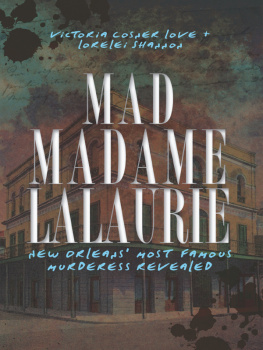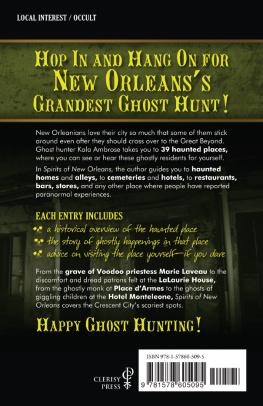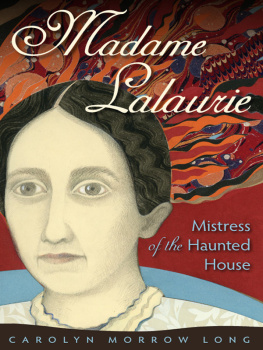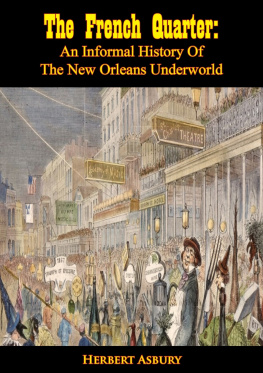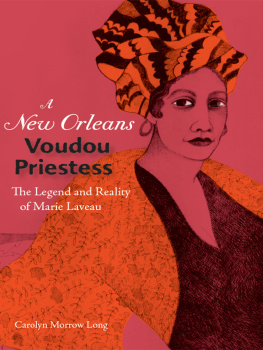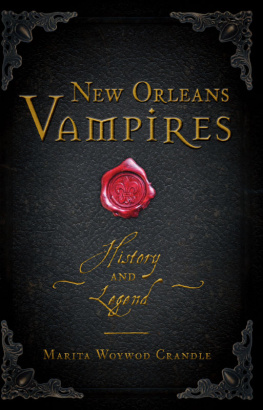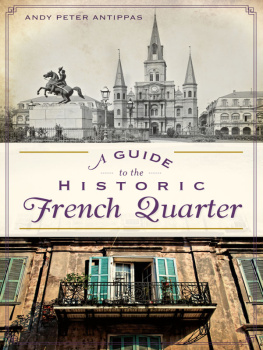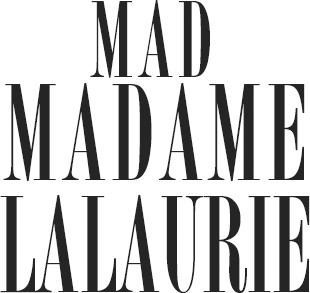NEW ORLEANS MOST FAMOUS MURDERESS REVEALED
VICTORIA COSNER LOVE + LORELEI SHANNON
Published by The History Press
Charleston, SC 29403
www.historypress.net
Copyright 2011 by Victoria Cosner Love and Lorelei Shannon
All rights reserved
First published 2011
Second printing 2011
e-book edition 2011
ISBN 978.1.61423.072.4
Library of Congress Cataloging-in-Publication Data
Love, Victoria Cosner.
Mad Madame Lalaurie : New Orleanss most famous murderess revealed / Victoria Cosner
Love and Lorelei Shannon.
p. cm.
Includes bibliographical references.
print edition: ISBN 978-1-60949-199-4
1. Lalaurie, Delphine. 2. Women murderers--Louisiana--New Orleans--Biography. I. Shannon, Lorelei. II. Title.
HV6248.L1825L68 2010
364.1523092--dc22
[B]
2010052978
Notice: The information in this book is true and complete to the best of our knowledge. It is offered without guarantee on the part of the authors or The History Press. The authors and The History Press disclaim all liability in connection with the use of this book.
All rights reserved. No part of this book may be reproduced or transmitted in any form whatsoever without prior written permission from the publisher except in the case of brief quotations embodied in critical articles and reviews.
From Victoria Love
This is dedicated to my family, who let me babble about death, torture, slavery and other horrors, and also to Lorelei, who always feeds my morbid soul.
From Lorelei Shannon
For the victims of the Lalauries, the victims of Hurricane Katrina and for the beautiful city of New Orleans. And for Victoria. Thank you so much for trusting me to assist with this fascinating project.
Contents
Acknowledgements
Victoria Love: Finding some of these documents, unveiling the secrets and methodically breaking down the legend was exhilarating and comes so rarely in a history buffs life. It was long past time to tell this story.
I want to thank my husband, Brian, who let me persist in this wild chase through history despite having a full-time job and two kids. He also translated our French documents and phrases for us. My mom got me numerous books from interlibrary loan at her local library despite the embarrassment of her having to pick up titles on serial-killing women, death, maiming and worse. The staffs of the Missouri Historical Society (St. Louis) and the Williams Research Center in New Orleans were stellar and patient with my questions and many requests. Ricardo Pustanio was more than gracious in sharing family history and his art. Claudia Williams and her staff provided patient answers to my zombie lore questions. Thank you to the staff of The History Press for their trust and patience, especially Becky Lejeune, Ryan Finn and Ashley Mancill. Thank you also to Fran Lawren and Pamela Bigelow for editing this complex history. I always wanted to thank my parents for not putting me in therapy when my interest in the morbid or macabre raised its head early in my life, so now is the time. And, of course, thanks to Lorelei, who took on the task with me of writing and editing this book. She inspires me every day.
Lorelei Shannon: Thanks to my family for putting up with my obsessive interest in this book. Huge, gigantic, enormous thanks to Victoria Love for getting the research done with such thoroughness, flair and ingenuity. As usual, Im in awe. Thanks to my dogs for letting me hug them when Id get freaked out by the subject material of this book. I love you all.
Chapter 1
The Legend
Believe it or leave it, there are ghosts in the French Quarters famous haunted house at 1140 Royal St.
States Item, March 7, 1966
In the Rue Royale stands this quaint, old-fashioned house about which so much has been written, and around which cluster so many wild and weird stories, that even in its philosophic day, few in the old faubourg care to pass the place after nightfall, or, doing so, shudder and hurry on with bated breath, as though midnight ghouls and ghosts hovered near, ready to exercise a mystic spell over all who dare invade its uncanny precincts.
Marie Puents, Daily Picayune, March 13, 1892
No visit to New Orleans is complete without a ghost tour. There are literally dozens available, in any theme you can imagine: pirates, vampires, hauntings, paranormal activity and more. New Orleans has it all. Perhaps the most famous destination for tours of the macabre is the Lalaurie Mansion.
On the corner of Royal and Governor Nicholls Streets stands what some people say is the most haunted house in America. Imagine you are standing in the twilight of a warm summer day, looking at the house, which casts a long, ominous shadow down the street. This neoclassical, three-story mansioncomplete with the traditional enclosed New Orleansstyle courtyardis said to be the site of a truly horrific case of torture, medical atrocities and abuse. It has witnessed more than 175 years of hauntings, terror, blood-crazed mobs and sorrow. Its austere exterior hides the elegant oasis within. If not quite beautiful, the house is dignified. It harkens back to the days when Creole Louisiana was king and the refinement of the lady of the house was paramount to a familys social success.
Imagine you are looking at the mansion, but you are not alone. A tour guide stands next to you. The two of you stare at the house in silence for a moment. When the tour guide begins to speak, she tells you a story:
In 1832, Madame Lalaurie, daughter of a prominent Creole family, and her nondescript husband, Dr. Louis Lalaurie, bought this elegant mansion and held the seasons most exquisite parties. Madame Lalaurie was the crme of Creole society, renowned for her beauty and grace. Born Marie Delphine Macarty, Madame Lalaurie was married twice to prominent men who mysteriously died, leaving Madame a very wealthy widow. Then Marie Delphine met the good doctor, who had recently completed medical school in Toulouse and immigrated to New Orleans.
In the spring of 1832, a cloud covered the Lalaurie Mansion. Whispers of slave abuse buzzed through the city. Louisiana didnt work on the Puritan/British code of ethics for slaves, which allowed an owner free rein to punish or even kill her slaves. The Code Noir, a decree that defined the conditions of slavery in the French colonial empire, was still enforced in Louisiana at that time, and it offered some meager protection to those enslaved. The code specifically forbade torture, mutilation and sexual abuse. It allowed for ordinary punishments, like confinement, chaining and whipping.
Your tour guide gives you a dark look. Those rumors must have been bad, she says.
A young American lawyer who was boarding in the neighborhood heard these rumors. He went to the Lalaurie home to point out the section of the Code Noir that prohibited severe abuse. He left dazzled by Madame Lalaurie, by her charm and beauty, denying that anyone so lovely could ever be cruel.
The whispers died down. Madame continued to entertain lavishly, with her two quiet, reserved daughters by her side. She was known to give the last of her wine to the servant behind her, whispering, Take this; it will do you good. There was even a court record from the 1820s that showed she had freed one of her slaves after the death of her second husband. It didnt seem possible that such a woman was abusing her household staff. Some people said the ugly stories were started by nouveaux-arrivs Americans, jealous of the Creole elitejust a nasty attempt to spoil their social standing and bring the proud Creoles down a notch.

